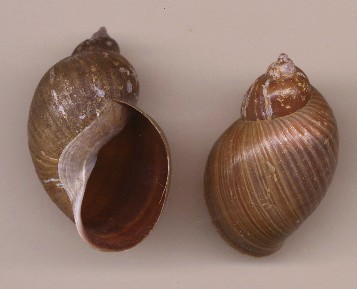Nutrition
Bulimnea megasoma are herbivores. They feed on algae and detritus, along with many other plants along creek and pond beds (Ottawa Field Naturists Club 1938).
In order to be able to eat these plants, these snails, along with other mollusks, have what is called a radula (Hickman et al 2009).
The radula allows for the snails to graze along surfaces of rocks or other substrates in order to scrape off algae or other vegetation (Johnson 2011).
The radula is also used for tearing into what the snail, or mollusk, is eating. In Bulimnea megasoma, they are one of the only snails to have larger lateral teeth which is a way of distinguishing them among those in its family (Baker 1911).
Most of the time though, freshwater snails will feed on organic sediments and those sediments and food particles will then be imbedded in a strand of mucus that will flow directly into the snails' mouth. They sometimes even only have to stick their "foot" out into the water column in order to grab food to eat when water currents are very fast. So technically, these snails have the chance to be suspension feeders (Johnson 2011).
Curious as to how these snails reproduce? Well go ahead and click on the little cartoon snail below to find out!

